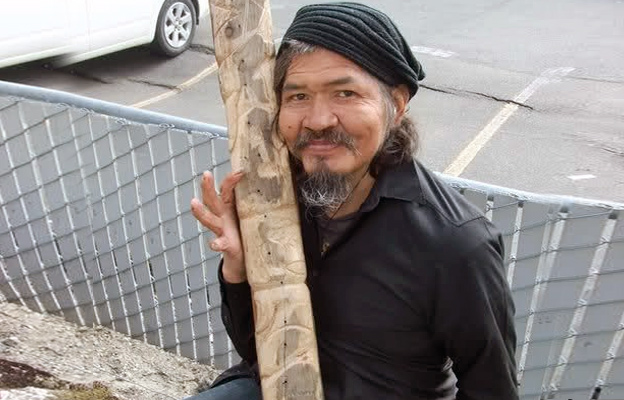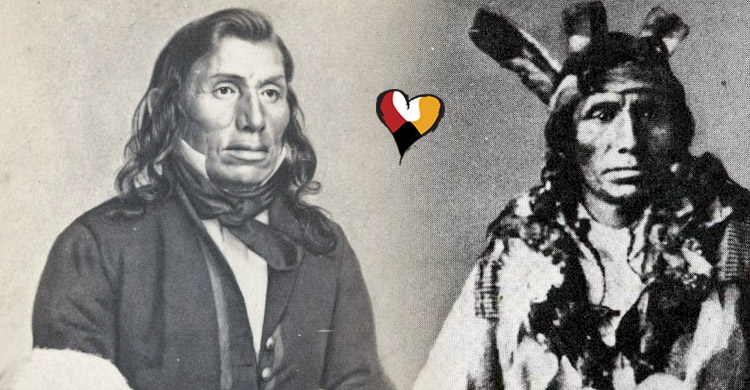John T. Williams a First Nations master carver, was murdered by police officer Ian Birk of the Seattle Police Department on August 30, 2010 while carrying a small, legal folding knife that he used for carving.
While the inquest found that the shooting of John T. Williams was unjustified, Ian Birk remains a free man. We are tired of police criminals who violate our constitutional rights and walk free, that’s a huge problem. We are tired of people being murdered by police!
It is hard to acknowledge “good” cops because of racist “pigs” who abuse their power and overshadow the hard work of law-abiding cops.
“The Shooting Death of John T. Williams” by Fern Renville
John T. Williams a 50-year-old seventh-generation Nitinaht carver of the Nuu-chah-nulth First Nations, was murdered four times by a Seattle police officer on August 30, 2010. He died at the scene. His only crime appears to have been walking across the street carrying a carving knife and a chunk of cedar.
In a press conference, the day after the shooting, Seattle Police Department (SPD) Deputy Chief Nick Metz said that Officer Ian Birk, 27, who has been with SPD for two years, was stopped at a downtown Seattle traffic light at 4:15 p.m. when the woodcarver crossed the street in front of his marked police car carrying an open pocketknife and a telephone-book-sized piece of cedar.
“And he could see the knife,” Metz told reporters, “the blade of the knife, and he could see he was doing something to the board. The officer thought it was important to find out what was going on and why this person had in public an open-blade knife.” Metz said Birk got out of his car, approached John T. Williams from behind and ordered the woodcarver to drop the knife three times.
When John T. Williams failed to do so within four seconds, Officer Birk fired his weapon five times from a distance of 10 feet. John T. Williams was struck by four bullets, including one lethal shot to the chest wall, and died at the scene. In its initial statement to the press, SPD described Williams as having been “advancing towards” Officer Birk, who felt threatened and responded by firing his weapon.
Over the next few days, eyewitnesses began stepping forward to dispute this version of events, and the police department quickly retracted its statement.
At a press conference on September 4, 2010, at the Chief Seattle Club, a day-shelter for Natives where John T. Williams was a familiar face, Jenine Grey, the club’s executive director, held SPD accountable for the death. “We are angry and outraged that his life was interrupted for seemingly no reason, and so callously disregarded. We are worried about our most vulnerable community members, who suffer regular harassment and abuse on the streets of Seattle.”
The shooting—and the fact that SPD’s attempts at damage-control included referring to the victim as a “chronic inebriate” with a “rap sheet”—has galvanized Seattle’s Native community and its allies, prompting a groundswell of diverse organizing efforts in response to the killing.
Many think this could be the Native community’s “Rodney King moment,” a reference to a brutal—and videotaped—beating of a black motorist by Los Angeles police officers in 1991 that made national headlines for months and galvanized activists in Los Angeles, who pushed through reforms of the Los Angeles Police Department.
There is a burgeoning awareness of the problematic relationship between SPD and communities of color, especially with street Natives such as John T. Williams who have regular contact with police and are frequently harassed and arrested for offenses inextricably linked to being homeless, such as drinking and urinating in public.
However, this incident is in a string of clashes between minorities and SPD officers that have increased the tension between the city’s police and many of its residents. SPD Officer Shandy Cobane was caught on video in April 2010 stomping on the head of a prone Latino suspect after telling him that he would, “beat the fucking Mexican piss out of you, homey.”
You feel me?” The announcement in December that neither the King County Prosecuting Attorney nor Seattle City Attorney would file charges against Cobane was met with outrage and frustration.
“These problems in the Seattle Police Department have been going on since the 1960s and 1970s, and they haven’t changed much in the atmosphere for minorities and Native Americans,” said longtime Seattleite and Cowichan First Nations member Abe Johnny, a veteran of the 1970s-era Indian fishing wars who coordinated security at the vigils and protests that took place outside the King County Courthouse throughout the week of the inquest for the Williams case.
King County Executive Dow Constantine ordered an expedited inquest into the killing after SPD’s internal Firearms Review Board found that the shooting of John T. Williams was unjustified (the details of the board’s investigation have not been made public).
Inquests are fact-finding hearings conducted before an eight-member jury, routinely called to determine the causes and circumstances of any death involving a member of any law enforcement agency within King County.
It was convened on January 10, 2011. The jury, after hearing six days of testimony by witnesses and experts, deliberated for nine hours, then gave their findings to Judge Arthur Chapman.
The six men and two women on the jury answered 13 questions, known as “interrogatories to the inquest jury.” The first was, “On August 30, 2010, did Seattle Police Officer Ian Birk observe John T. Williams crossing the street?” All eight jurors answered “yes.”
Just one of the eight jurors answered “yes” to the crucial question, “Based on the information available at the time Officer Birk fired his weapon, did John T. Williams pose an imminent threat of serious physical harm to Officer Birk?” Only four of the jurors were convinced that, “Officer Ian Birk believed that John T. Williams posed an imminent threat of serious physical harm to Officer Birk at the time Officer Birk fired his weapon.”
The inquest was painful for the Williams family. On the witness stand, Rick Williams, the elder brother of John T., was asked by Birk’s attorney Ted Buck: “Mr. Williams, were you aware that your brother had grown increasingly psychotic in the months preceding his death?” prompting an objection from the attorney representing the Williams family and outrage on the part of supporters in the courtroom who wondered where the evidence was to support such a theory (Judge Chapman sustained the objection and jurors were instructed to disregard this assertion).
The family had to listen to descriptions by witnesses of the dying moments of John T. Williams—how he “fell almost kind of gracefully” when he was shot, and that he “struggled a bit” as he bled out on the pavement. Birk testified that he had been “left with no reasonable alternative” but to shoot Williams, who was displaying “pre-attack indicators” of a “lowered stance, stern jaw, furrowed brow, and thousand-yard stare.”
When John T. Williams family attorney Tim Ford asked if Birk had lost sleep wondering about the possibility that he’d killed a man who was guilty of no crime, Birk answered that he had not.
The family also had to watch police dashboard-camera video footage of the mortally wounded Williams lying for several minutes before being approached by a “tactical line” of officers, who handcuffed him before offering medical assistance.
And they were shown blown-up images of their family member on the autopsy table—including a photograph of his bullet-ridden heart in a tray, which prompted the family to walk out of the courtroom. Many facts were presented in the inquest, but none of them explained why Birk shot Williams with so little provocation.
It was established that there had been no citizen complaints against John T. Williams that would help to explain why the officer initiated contact with Williams, and no witnesses saw Williams behaving in a threatening manner; in fact, two eyewitnesses described Birk as the aggressor.
It was also evident that Birk never identified himself as an officer of the law—the witness nearest to the shooting testified at the inquest that she heard Birk yelling, but ignored it as a common occurrence on a downtown street. “If I had heard ‘Stop! Police!’ I would definitely have stopped and turned around,” she stated on the witness stand.
As documented in his patrol car’s camera footage, Birk fired his weapon within four seconds of issuing the commands for Williams to drop the knife. The bullets struck Williams’ right side, indicating that he was not facing the officer at the time of the shooting.
Found close to the scene was William’s three-inch pocketknife—shorter than the legal limit for a blade in the city of Seattle—that he used for carving. “The purpose of the inquest is to air the facts,” stated Judge Chapman at the start of the deliberation, but some people who attended the inquest did not feel that it served this function adequately.
For reasons that are mysterious to the Williams family attorneys, the jury was not allowed to hear testimony that the late Williams was deaf in one ear and hearing-impaired in the other.
Nor was the jury allowed to see photographs of John T. Williams and other family members carving in public, which would have underscored the point that carrying and using knives in public was habitual and customary for this clan of seventh- and eighth-generation First Nations carvers who have work in the collections of the Smithsonian and the Royal BC Museum in Victoria, British Columbia.
Still, Ford, the civil rights attorney representing the Williams family, said of the outcome: “I believe that this is about as strong a statement as you can expect.… in all the contested questions, there’s a significant majority [of jurors] that says, ‘This was not justified.’?”
King County Prosecuting Attorney Dan Satterberg will take the inquest jury’s findings—and SPD Firearms Review Board’s earlier “unjustified” shooting verdict—into consideration in deciding whether to press criminal charges against Birk, who was stripped of his gun and badge after the Firearms Review Board’s finding, and has been on paid leave since the shooting.
The family of John T. Williams and a throng of supporters visited Satterberg’s office January 21, 2011 to urge the attorney to file criminal charges. Ahousat First Nations member Pat John was one of the supporters who accompanied the Williams family; John, who said he was “uplifted” by the visit, drummed and sang a prayer song for Satterberg. “He knows there is a task there and promised we will know his decision by February 15 or thereabouts,” John said.
The prosecutor’s office will consider whether to charge Birk with second-degree murder, first-degree reckless manslaughter or second-degree negligent manslaughter—or may choose to not charge him at all.
While the findings of the inquest jury were damning according to Williams’ attorney, in the 30 years that King County has had its current inquest system, an inquest has never led to charges filed against an officer—even when there had been Firearms Review Board findings to the contrary.
A second-degree murder charge would require showing beyond a reasonable doubt that Birk intended to unlawfully kill Williams, or that Birk intentionally and unlawfully assaulted John T. Williams, causing his death. Experts agree that either would be difficult to prove.
Amidst this shattering tragedy, some found reason for hope. The community came together and organized support for the Williams family during the inquest. The nearby Chief Seattle Club became a refuge, opening its dining room each day to the Williams family and their supporters for a lunch followed by song, prayer and the burning of sage—a symbolic purification ritual common to many of the members of the diverse array of Native supporters.
Ho-Chunk Nation member Penny Octuck-Cole, who attended the inquest, said the courtroom was filled everyday with a multicultural group of supporters. “I witnessed and experienced the true meaning of synchronicity,” she said. “All four colors of man—the medicine wheel—came together to support the Williams family and to speak out for justice!”
That justice may have to come from the U.S. Department of Justice (DOJ), which has opened a preliminary review of SPD’s practices after the American Civil Liberties Union of Washington and dozens of community groups asked for an investigation into SPD’s use of force against minorities.
In response to the announcement of the DOJ review and the conclusion of the inquest, Blackfeet member Gyasi Ross, who also attended the inquest, said “We’re thankful to the jurors for seeing past Ian Birk’s attorney’s attempts to obscure the issue and put John T. Williams on trial, attempting to paint John T. Williams as ‘just another drunk and belligerent Indian.’ But ultimately, our true ‘win’ comes from an investigation from the Department of Justice into why this happened, and also from making sure that it never happens again to anybody, Native or not.”
Read more stories of people murdered by police
SOURCE: Based on the article from IndianCountryTodayMediaNetwork “The Shooting Death of John T. Williams” by Fern Renville







